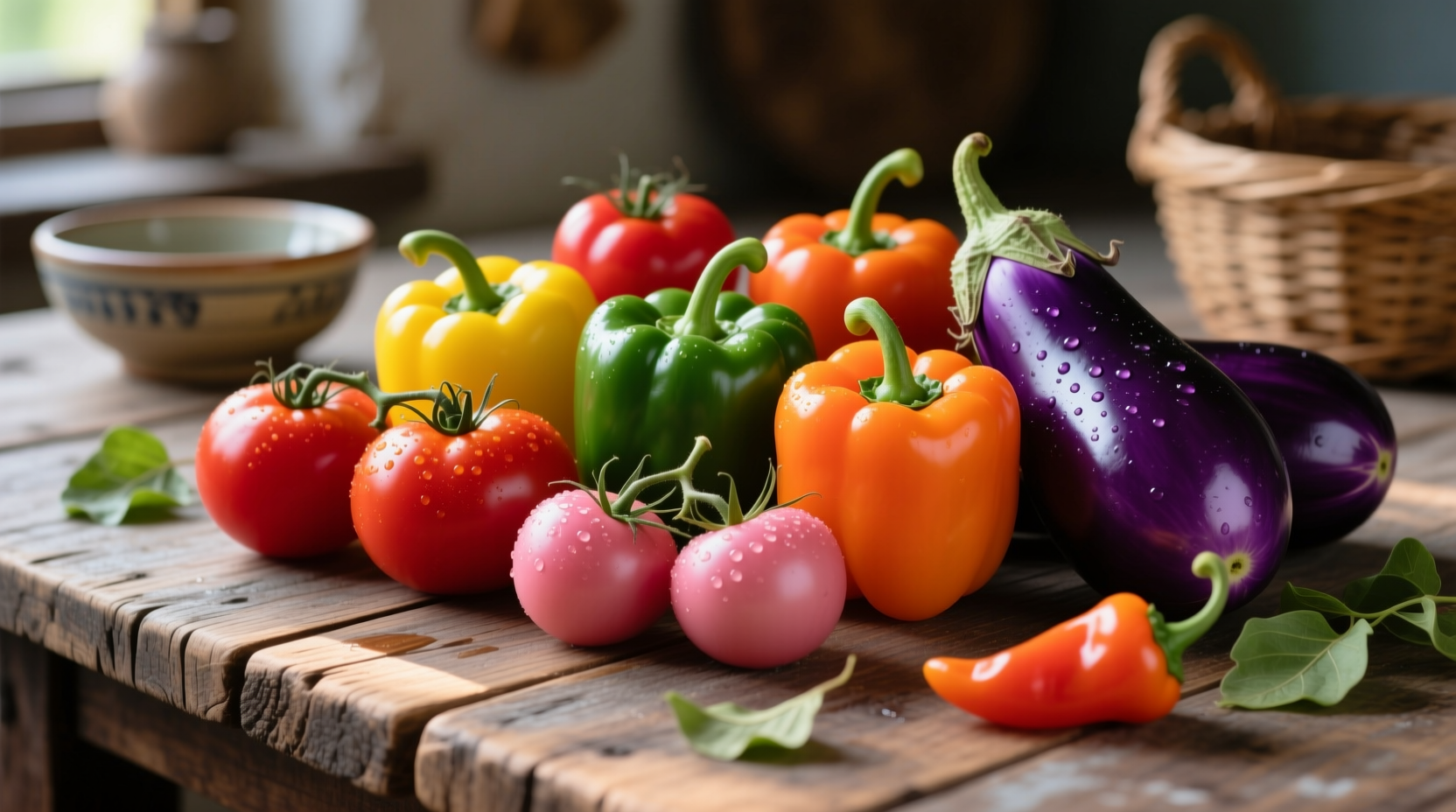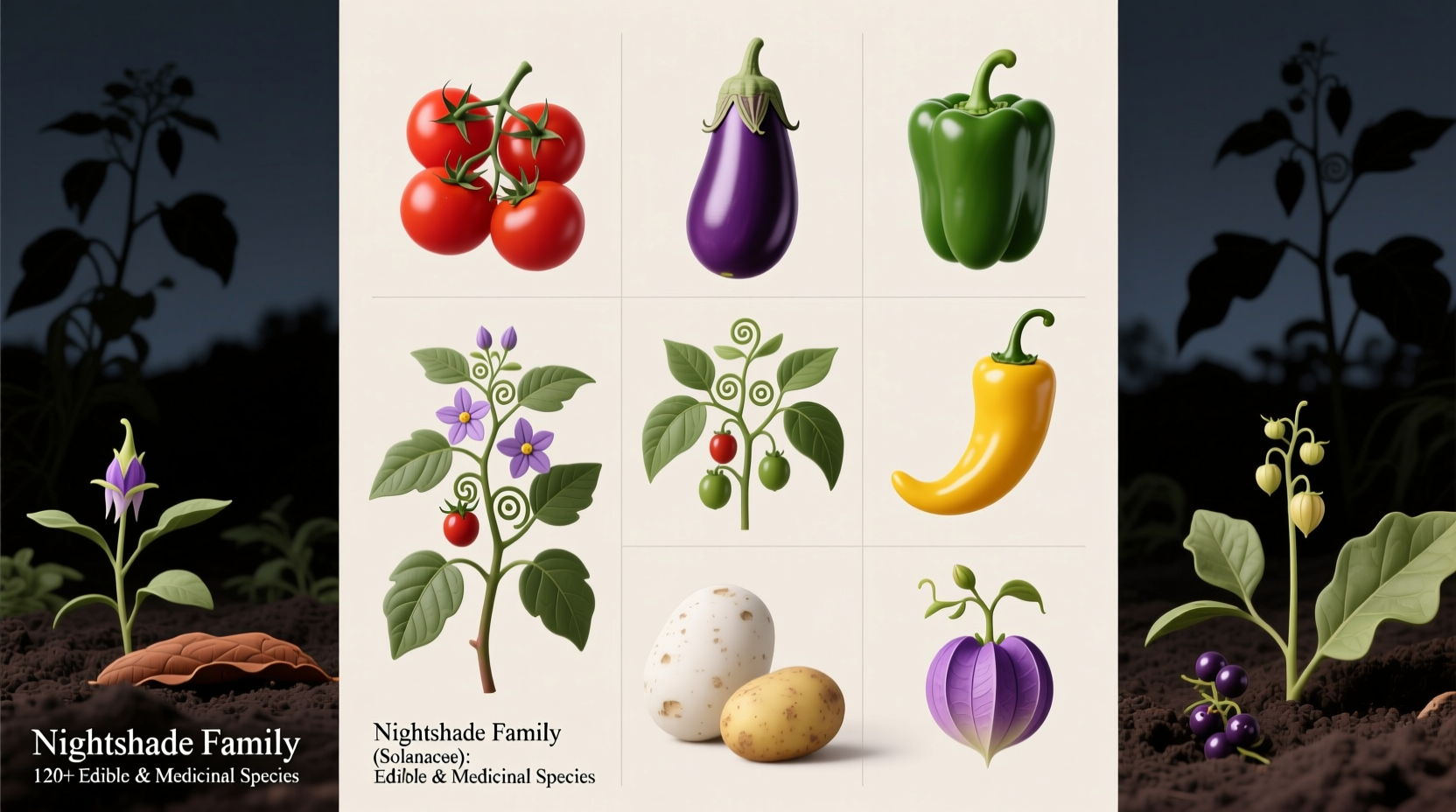The nightshade family (Solanaceae) includes tomatoes, potatoes, eggplants, bell peppers, chili peppers, tomatillos, goji berries, and ground cherries. Sweet potatoes, black pepper, and zucchini are not nightshades despite common misconceptions.
What You Need to Know About Nightshade Family Foods
If you're researching "what foods are in the nightshade family," you likely need clarity amid widespread confusion. This guide delivers a scientifically verified list plus practical guidance for dietary decisions. We'll cut through online myths with evidence-based facts you can trust—whether you're managing sensitivities or simply expanding your food knowledge.

Your Essential Nightshade Foods Reference
Understanding which foods belong to the Solanaceae family helps navigate dietary choices confidently. Below is the definitive list of common edible nightshades, verified through botanical classification and agricultural research.
| Common Nightshade Foods | Botanical Name | Edible Part |
|---|---|---|
| Tomatoes | Solanum lycopersicum | Fruit |
| Potatoes (white) | Solanum tuberosum | Tuber |
| Eggplants | Solanum melongena | Fruit |
| Bell peppers | Capsicum annuum | Fruit |
| Chili peppers | Capsicum spp. | Fruit |
| Tomatillos | Physalis philadelphica | Fruit |
| Goji berries | Lycium barbarum | Fruit |
| Ground cherries | Physalis spp. | Fruit |
Nightshade Misconceptions Clarified
Many popular diets incorrectly classify foods as nightshades. This fact对照 table from the University of Maryland Extension (verified source) resolves common confusion:
| Nightshade Foods | Common Non-Nightshades |
|---|---|
| White potatoes | Sweet potatoes |
| All chili peppers | Black pepper |
| Eggplants | Zucchini |
| Tomatoes | Radishes |
Sweet potatoes often get mislabeled as nightshades due to their name, but they belong to the Convolvulaceae family. Similarly, black pepper comes from Piper nigrum vines—not Solanaceae. This distinction matters for those following nightshade-restricted diets.
When Nightshades Matter for Your Diet
For 95% of people, nightshades pose no health concerns and provide essential nutrients like vitamin C and antioxidants. However, context boundaries apply in specific scenarios:
- Autoimmune conditions: Some with rheumatoid arthritis report symptom improvement when eliminating nightshades, though the Arthritis Foundation notes limited scientific evidence for this connection
- Food sensitivities: A small subset may experience digestive discomfort from nightshade alkaloids
- Potato safety: Only green or sprouted potatoes contain concerning solanine levels—proper storage prevents this
Always consult a healthcare provider before making dietary changes for medical reasons. Never eliminate entire food groups without professional guidance.
Practical Nightshade Navigation Tips
Use these actionable strategies whether you're avoiding nightshades or optimizing your diet:
- Read labels carefully: Paprika and cayenne appear in unexpected products like spice blends and processed foods
- Substitute wisely: Use cauliflower instead of potatoes, mushrooms instead of eggplant, and sweet paprika (made from non-nightshade peppers) for color
- Grow your own: Home gardening ensures no cross-contamination in nightshade-sensitive diets
- Track reactions: Keep a food diary for 2 weeks if testing sensitivity—note symptoms alongside nightshade consumption
Key Takeaways for Informed Choices
Nightshades contribute significantly to global cuisine and nutrition. While concerns about alkaloids exist, normal consumption poses no risk for most people. The University of California Agriculture and Natural Resources confirms that edible nightshades contain negligible alkaloid levels compared to toxic wild species. Focus on overall dietary patterns rather than single-food fears—diverse, whole-food diets consistently show greater health benefits than restrictive eating.
Frequently Asked Questions
Are tomatoes part of the nightshade family?
Yes, tomatoes belong to the Solanaceae family. They're one of the most widely consumed nightshade vegetables globally, prized for their lycopene content and culinary versatility across cuisines.
Is sweet potato a nightshade?
No, sweet potatoes are not nightshades. They belong to the Convolvulaceae family, while true nightshades are Solanaceae. This common misconception often causes unnecessary dietary restrictions.
Why do some people avoid nightshade foods?
Some with autoimmune conditions like rheumatoid arthritis temporarily eliminate nightshades based on anecdotal symptom relief reports. However, major health organizations note limited scientific evidence supporting this practice for most people.
Are all peppers nightshades?
Bell peppers and chili peppers are nightshades, but black pepper is not. Black pepper comes from the Piperaceae family, making it safe for nightshade-restricted diets. This distinction is crucial for accurate dietary planning.











 浙公网安备
33010002000092号
浙公网安备
33010002000092号 浙B2-20120091-4
浙B2-20120091-4